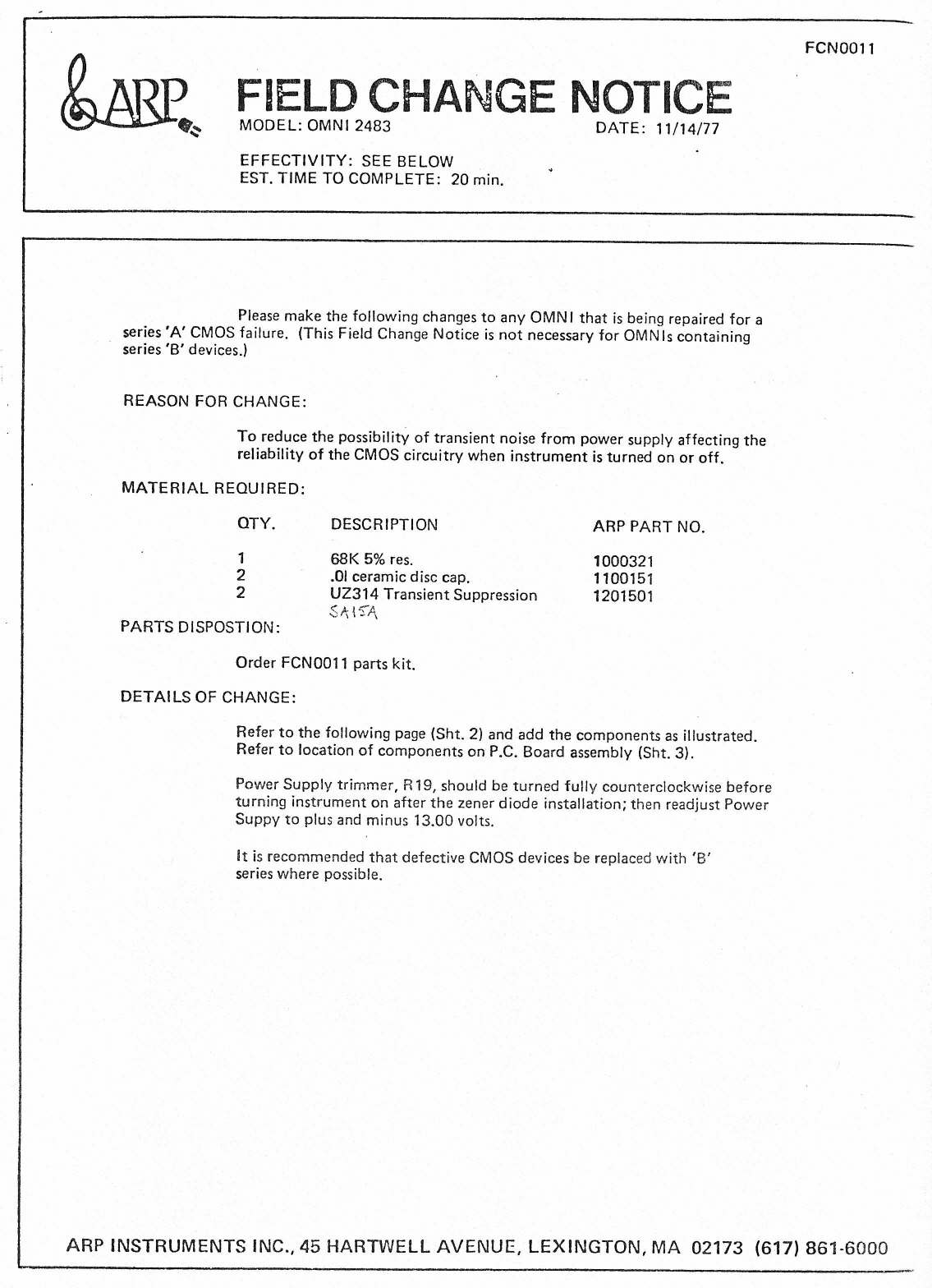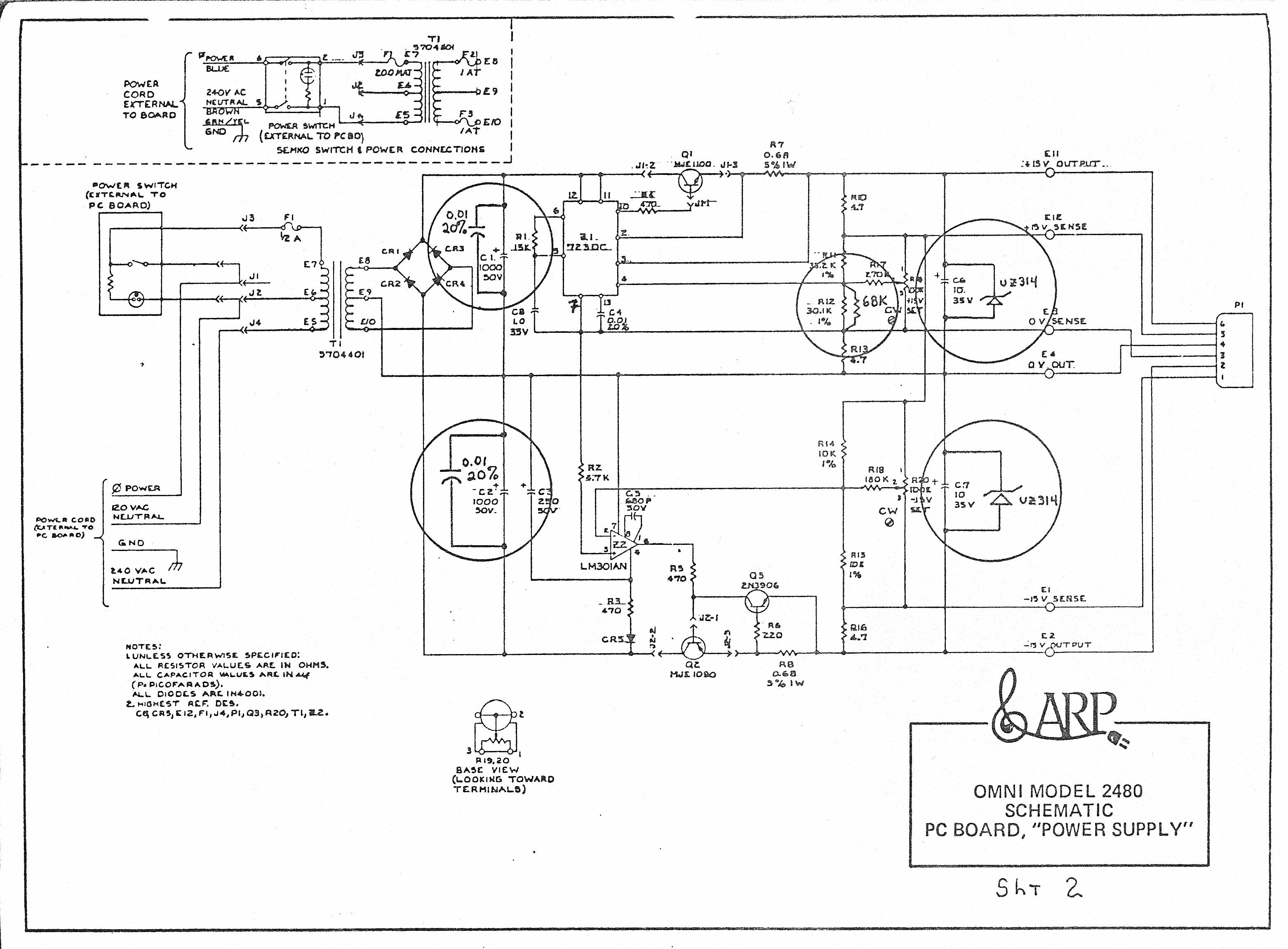Description | The Omni featured preset, electronically generated Orchestral ensemble String voices including polyphonic Violin and Viola sounds as well as monophonic Bass and Cello. The instrument also included a monophonic Bass Synthesizer section and a polyphonic Synthesizer section. The Synthesizer section featured a 24 dB/oct Voltage-Controlled Low Pass Filter (LPF); an ADSR envelope generator and a single waveform (triangle) Low Frequency Oscillator (LFO) were both routed to control the VCF Cutoff frequency. A Waveform Enhancement switch allowed selection of a square wave voice waveform vs. the default quasi-sawtooth waveform. The ARP Omni had a unique logo that was painted on to the back face of the unit.
The String and Synthesizer sections of the 49-note Omni utilized the Mostek MK50240 Top Octave generator IC along with divide-down circuitry; as a result, these sections were fully polyphonic, as opposed to subsequent polyphonic synthesizers such as the Sequential Circuits Prophet-5 and Yamaha CS-80 which featured dynamically allocated, limited polyphony of 5- and 8-voices respectively. But then, these units featured a far more comprehensive and complex synthesis architecture.
The three sections of the Omni - Strings, Synthesizer, and Bass - were all simultaneously available and mixable; the String and Synthesizer sections featured separate audio outputs on the rear panel of the unit which allowed separate amplification and signal processing of these sections for stereo effects. The Omni was single-oscillator in nature; normally, the String section alone was processed through the on board, patented ARP 3-voice Chorus Phaser circuit, producing the lush, moving sound the instrument is most known for. However, the Synthesizer section was processed through this circuit when a front panel "Chorus Phaser" switch was activated, simultaneously summing the String and Synthesizer section outputs and slowing the Chorus speed.
|





